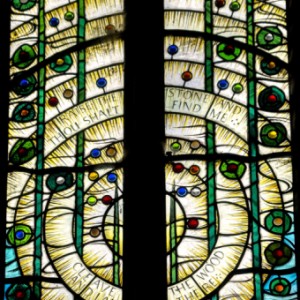yew
In the Canterbury Tales, Chaucer wrote that once April arrived, folk longed to go on pilgrimage. I decided to go on the day of the Spring Equinox - the equinoxes ( when day and night are of equal length) are my favourite times of the year, not times of extreme as at solstice, but of balance.
I had come across the Five Churches Walk last year and have been looking forward to it for months. The 10(ish) mile route visits 5 churches in and around the Cuckmere Valley (plus a couple of optional extras) and the Long Man of Wilmington, a huge figure cut into the South Downs. Most of the churches are 800-1000 years old, and some are built on even older sites of worship. The footpaths and trackways between them, indentations into the chalky and flinty Sussex soil, have been walked for many generations. Everywhere is the whiff of history, the reminder of those who were here before us.
At Wilmington, I almost gasped when I saw this yew tree, which has been estimated to be over 1600 years old, supported by props and chains. Its girth near the ground is 23 feet. If only it could talk, and tell of what it has seen!
I was reminded of a film I saw recently (a wonderful adaptation of a book by Patrick Ness) called A Monster Calls, where a yew tree in a churchyard comes terrifyingly alive.
A new stained glass window, commissioned to mark the millennium, was inspired by the yew tree, symbolic of the Tree of Life. The design is based on the rings in a cross section of the trunk and cellular structure of wood. (See extra). A new yew was planted in the churchyard in the year 2000. What changes will it have witnessed by the year 3,600, I wonder?


Comments
Sign in or get an account to comment.


